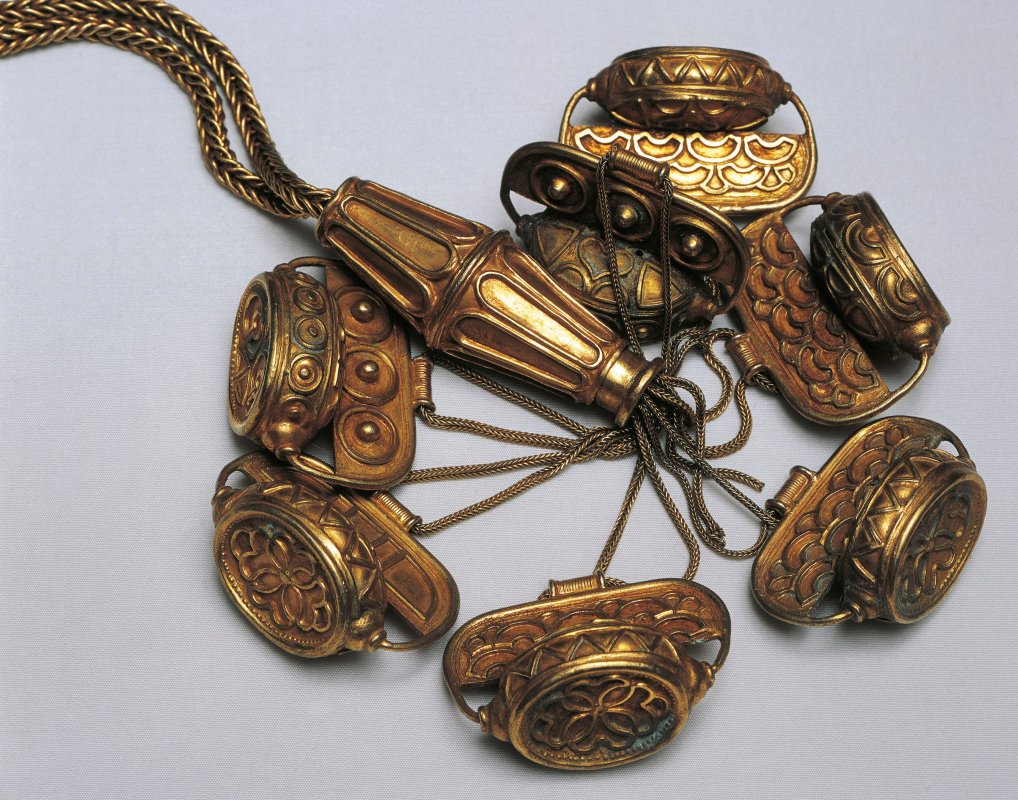The Carambolo Treasure is a magnificent hoard of ancient gold objects, originally found by Spanish construction workers near Seville in 1958. When it was found, the treasure, which dates back 2,700 years, was thought to be from Tartessos, a civilization that thrived in southern Spain during the ninth and sixth centuries B.C. The wealthy community seemingly “disappeared” from history about 2,500 years ago, and led to theories equating Tartessos with the mythical site of Atlantis, explains National Geographic. But now, new chemical analysis has solved the mystery regarding the origin of the Carambolo Treasure, and it has nothing to do with Atlantis.
The gold was taken from mines in Spain, says Ana Navarro, the director of the Archaeological Museum of Seville and one of the authors of a recent study of the treasure published in the Journal of Archaeological Science. The Carambolo Treasure is made up of 21 pieces of gold work, including a necklace with intricately carved pendants, chest decorations and beautiful bracelets. Navarro told National Geographic that nothing else quite like it has been discovered from this period of Spain. Navarro and her team used chemical and isotopic analysis to examine tiny gold fragments that had broken off from the jewelry. It revealed the material likely came from the same mines associated with monumental underground tombs at Valencina de la Concepcion. The mines, which are located near Seville, date back to the third millennium B.C.
Thanks for reading InsideHook. Sign up for our daily newsletter and be in the know.


















